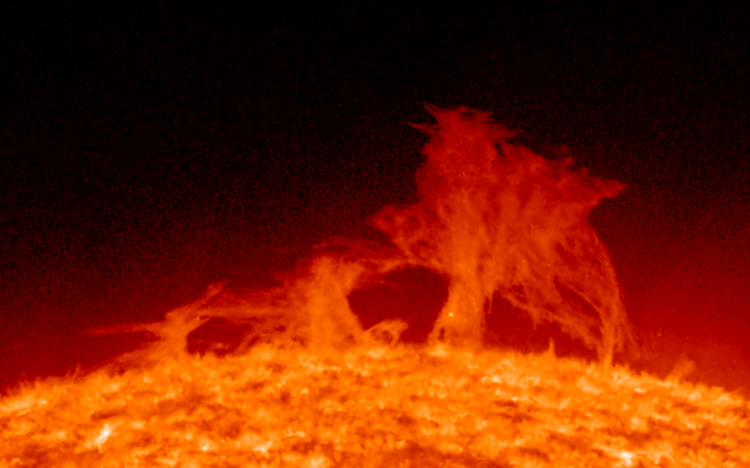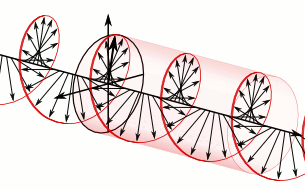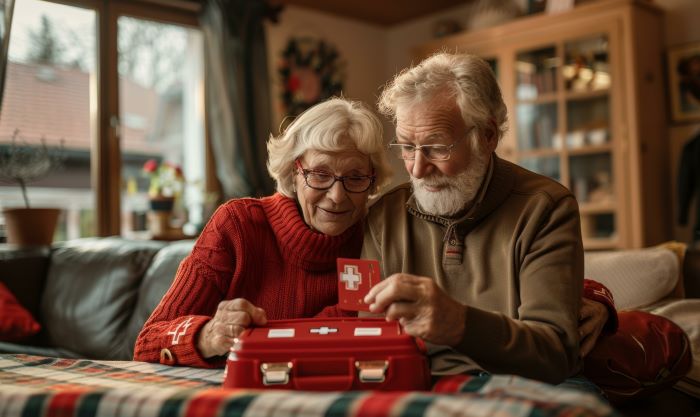Preparing for an EMP or CME Disaster: Seniors’ Survival Guide

Imagine waking up to a world where the clock on your bedside table is dark, your phone won’t turn on, and the neighborhood is eerily quiet. This could be the aftermath of an EMP or CME event. If you’re unfamiliar with these acronyms, you’re not alone.
EMP stands for Electromagnetic Pulse, a burst of electromagnetic radiation from a nuclear detonation or a naturally occurring event such as a severe solar storm. Conversely, CME refers to a Coronal Mass Ejection, an eruption of plasma from the sun’s corona that can send solar particles hurtling toward Earth.

What differentiates an EMP or CME from other natural disasters is their ability to disrupt electronics and power grids on a massive scale. For seniors, this poses a unique risk. Imagine medical devices that no longer function, heating systems that fail during a cold winter, or the loss of communication modes you rely on. This scenario isn’t about sparking panic but emphasizing the need for preparation.
As a senior, you may be more susceptible to the disruptions caused by these events. The vulnerability stems from reliance on medical devices, reduced mobility, or isolation. Preparing now means not just securing your personal safety but also ensuring that your quality of life is protected during these uncertain times.
Read this – Electromagnetic pulse
It is critical to foster resilience by staying well-informed about EMPs and CMEs’ threats and how to mitigate them. Knowledge can be empowering, especially when it comes to disaster preparedness. Planning can transform the unknown into something manageable, giving you control and peace of mind.
Creating an EMP/CME-Ready Environment for Seniors
If you’ve ever experienced a power outage, you know how much it disrupts daily life. Now, imagine that on a larger scale, one that doesn’t just last a few hours but can potentially disable electronic systems for an extended period. That’s what an EMP or CME can do. As a senior, ensuring that your living environment is prepared for such events is crucial.
Related – Surviving with Seniors: Harnessing the Golden Wisdom for Emergency Preparedness
The first step is a thorough assessment of your home. Check for vulnerabilities in your electrical system and consider ways to reinforce your space against EMP effects. For some, this might involve installing protective devices or shielding critical electronics. It’s not as daunting as it sounds, though. Simple measures can make a big difference in your home’s resilience.

In an age driven by electronic devices, think beyond the usual and look into EMP-proof gadgets. Items like solar-powered chargers and hand-crank radios remain functional when modern conveniences fail. These are wise additions to your home and can keep you connected during isolation.
Communication is vital in a disaster, but what happens when your phone and internet stop working? It’s smart to plan for alternatives. Keep a list of emergency contact numbers written down, and remember that traditional landlines often operate when cellular networks do not. However, many phone companies are installing digital lines. As a backup, a battery-operated radio can keep you informed about emergency broadcasts.
Read this – Emergency Communication Survival Gear
Lastly, consider your energy dependence. If a CME knocks out power grids, how would you cook, heat, or see in the dark? It’s common sense to have a supply of non-electric items like matches, candles, and blankets. Better yet, invest in solar panels or a generator — but remember, it’s ESSENTIAL to protect these with the right shielding so they don’t become expensive paperweights after a disaster.
Personal Preparedness: Health and Safety Priorities for Seniors
Preparing for an electromagnetic event means considering more than securing gadgets and appliances. For seniors, safeguarding their health and safety takes center stage. Having a plan for any health-related emergencies that may arise during an EMP or CME disaster is crucial.
Medication is often a key concern for many seniors. An extended disaster event could disrupt supply chains, making it essential to have an adequate reserve of all prescribed medications. Work with your healthcare provider to secure a sensible stockpile that can last through an emergency.
Related – Evacuation Plans for Seniors in a Nuclear Emergency
In disasters, a support network can be a lifeline. Cultivate connections with family members, neighbors, and potential caregivers. If you’re part of a community, whether it’s a retirement community or neighborhood, develop a check-in system so that everyone knows how to look out for one another in times of crisis.
It’s not just about surviving an EMP or CME event; it’s about maintaining quality of life afterward. Regular exercise and a balanced diet can strengthen your body and give you an edge in a potentially challenging recovery environment.
Mental health should also be a priority. Understandably, the aftermath of a disaster can be incredibly stressful. Consider establishing routines that promote mental well-being, like mindfulness exercises or hobbies that can be done without electronic devices.
The transition into the next section is about extending the circle of preparedness beyond your front door. It’s about tapping into community resources and fostering broader support networks. With their wealth of experience and knowledge, seniors can play a vital role in community-wide disaster preparedness. The following section will explore how seniors can leverage local programs and initiatives for better resilience in the face of these modern threats.
Community Involvement and Resources for Senior Disaster Preparedness
My experience has taught me that individual preparedness doesn’t exist in a vacuum; community ties are pivotal. Leveraging local senior centers and community programs can bolster your disaster readiness. Active engagement can make a considerable difference through workshops, information sessions, or practical skill-building.
Related – Creating An Emergency Plan For Seniors
Don’t overlook government and non-governmental organization (NGO) resources. Agencies often have assistance programs designed specifically for seniors. From educational materials to emergency aid, these resources are invaluable. Seek them out, familiarize yourself with them, and incorporate them into your plan.
Regular participation in community-wide drills can dramatically improve your ability to respond effectively to an actual event. These rehearsals serve not only to test the robustness of your plan but also to deepen your familiarity with local emergency services and protocols.
Fostering intergenerational cooperation is also crucial. Connecting with younger family members or volunteers can provide a strong support system. It’s about complementing your wisdom and experience with their vigor and perhaps more current technical skills. Together, you build a resilient community capable of facing EMPs or CMEs head-on.
Remember, the goal is not just to survive an EMP or CME event but to maintain your quality of life during recovery. Start conversations, take the initiative, and participate in your community’s preparedness efforts. Your actions can inspire others and create a safety net that benefits everyone.






